The number of OpenSim grids accepting the multi-grid OMC virtual currency reached a record high in the first quarter of this year, as has the number of users of this hypergrid-enabled currency from Austian virtual currency exchange Virwox.
In the first quarter of the year, the OMC, or Open Metaverse Currency, almost doubled in popularity, going from around 600 users in January to almost 1100 users in March.
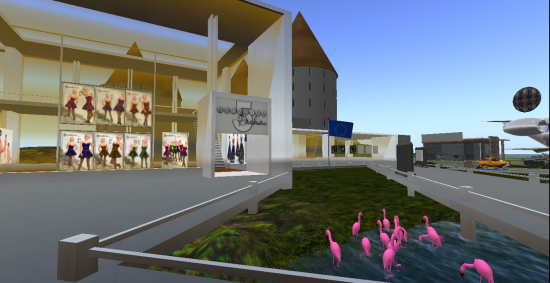
The OMC is fully convertible, and can be bought and sold for US dollars, British pounds, Euros, and Swiss francs, and can also be traded for Second Life ‘s Linden dollars. The OMC has an exchange rate of around 270 OMC to US $1.
Grid Growth
After an initial drop at the end of 2010, the currency became more widely used. The number of grids where the OMC can be used has grown from 18 at the beginning of the year to an all-time high of  28.  As the number of OMC-enabled grids rise, the usefulness of the currency rises as well. With OMC being available on more grids, this means more opportunities for shopping on different grids.
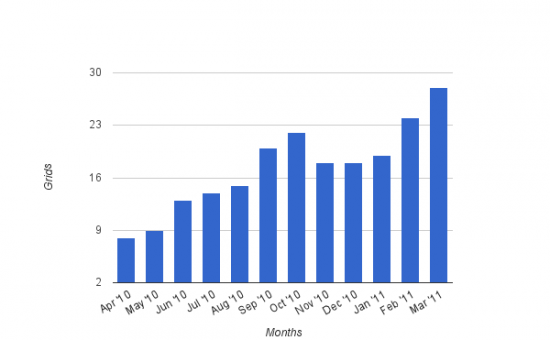
User and Transaction Growth
The number of registered users of OMC has almost doubled in the first three months of the year, going from around 600 to 1,100. The beginning of 2011 showed a steeper increase in the number of registered users, compared to 2010, a sign that adoption may be accelerating.
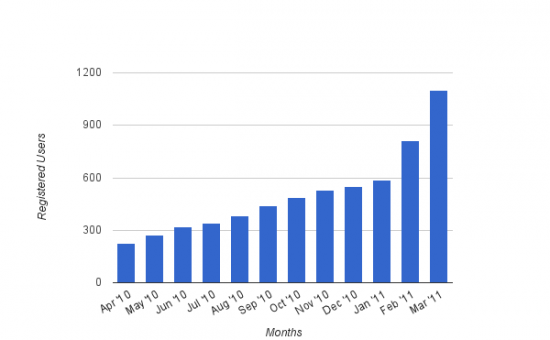
Although the total value of OMC transactions fell sharply at the end of 2010, it made a sizeable comeback in March.

One possible explanation for this drop is that some OMC-enabled grids may have suffered from upgrade problems or from a breakdown in hypergrid connectivity as a result of new releases of the OpenSim software, TalentRaspel virtual worlds Ltd. president Kai Ludwig told Hypergrid Business.
TalentRaspel operates several OMC-enabled grids, including the social grids Wilder Westen and Open Neuland.
“I remember January as a technically difficult month,” he said. “We managed to keep operations stable by carefully using our test systems for every small step.”
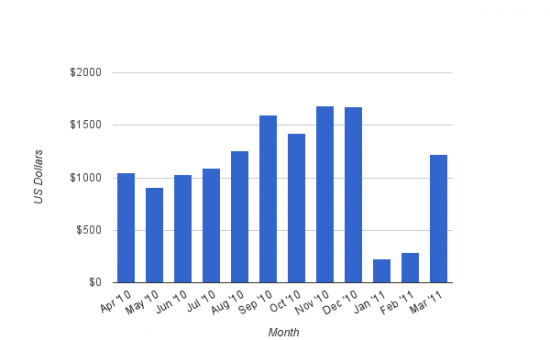
Despite upgrade and connectivity issues, the total amount of OMC in circulation has continued to rise.
Since the end of last year, the amount of OMC in circulation has risen steadily to reach a high of over $2,000.
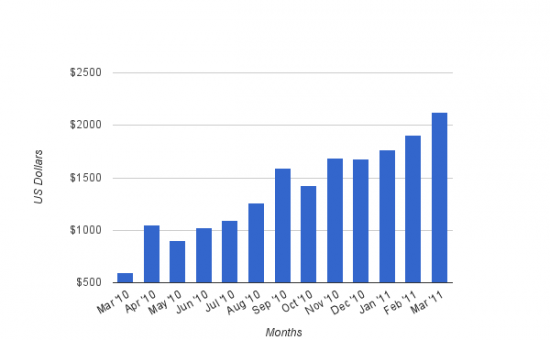
The OMC currency works independently of any particular grid, and is stored in the users’s Virwox account — very similar to the way that PayPal stores money for its users. Additional funds can be added or withdrawn from the account at any time.
And, as with PayPal payments in OpenSim, final authorization for each transaction takes place on the Virwox website, for maximum security. In addition, each grid that enables OMC has to be approved by Virwox.
OMC works with all existing Linden shopping scripts, so goods are delivered in-world at time of purchase. Merchants can scam the system — as they can in Second Life — by promising one product and delivering something else. However, a grid that doesn’t police its merchants and has too many complaints from shoppers stands to lose its OMC connectivity.
The OMC currency works across hypergrid teleports, so a shopper could travel to other grids to buy goods and bring them back to their own grid. However, with new improvements in hypergrid security, not all items may be transportable to other grids. Shoppers are urged to buy from merchants they know, or to experiment first with small items or freebies, to ensure that they can bring goods home.
The OMC isn’t just limited to shopping, however.
“In Europe, we have a more relaxed attitude towards adult services — and gambling, sports betting, etc… — than in the U.S.,†said Frank Kappe, a professor at the Institute for Information Systems and Computer Media at Austria’s Graz University of Technology, and one of the creators of the OMC.
Beyond OMC
In other news from Virwox, the exchange reported that is has surpassed more than 30,000 total registered users and has traded more than $30 million worth of Linden dollars, the exchange announced May 4.
In addition, since rolling out support for the Avination grid’s virtual currency in February, the exchange has also traded more than 20 million C$ — or approximately US $74,000. U.K.-based Avination is the second-largest public OpenSim grid by land area, and grew fast over the past few months as a result of radio and Second Life advertising campaigns, as well as a vibrant in-world gambling industry.
By comparison, the OMC exchange volume on Virwox is just 12 million OMC — or around $44,000.
One reason for the difference is that Avination is a closed, commercial grid. Content cannot be taken off the grid via hypergrid teleports or region OAR file backups or inventory IAR backups. As a result, merchants are more comfortable selling virtual good in that environment.
Most of the large OMC-enabled grids, however, including GermanGrid, are hypergrid-enabled, allowing goods to travel to other grids where they could be exported and, potentially, distributed illegally. As a result, many merchants have been hesitant about selling their goods there. In addition, given hypergrid compability issues as a result of recent OpenSim upgrades, shoppers may be wary of spending money on foreign grids if there’s a possibility that they won’t be able to bring their purchases home with them.
Recently, closed commercial grids have begun adopting the OMC as well, in order to avoid the hassles of managing their own virtual currencies, but these grids haven’t yet grown to the point where they constitute a sizeable retail market.
Today we passed a number of important milestones at the same time: We were able to welcome our registered user number 30,000. Also, we have traded over 7,500,000,000 Linden dollars (about 20 million Euro / US$ 30 million), emphasizing our position as the leading independent exchange for trading Linden dollars. In addition, we have traded already 20 million Avination C$.
- Firestorm opens office in OSGrid - October 17, 2012
- 5 ways to use achievements for viral marketing - September 12, 2012
- Cloud Party is a social platform, not a business venue - June 21, 2012
